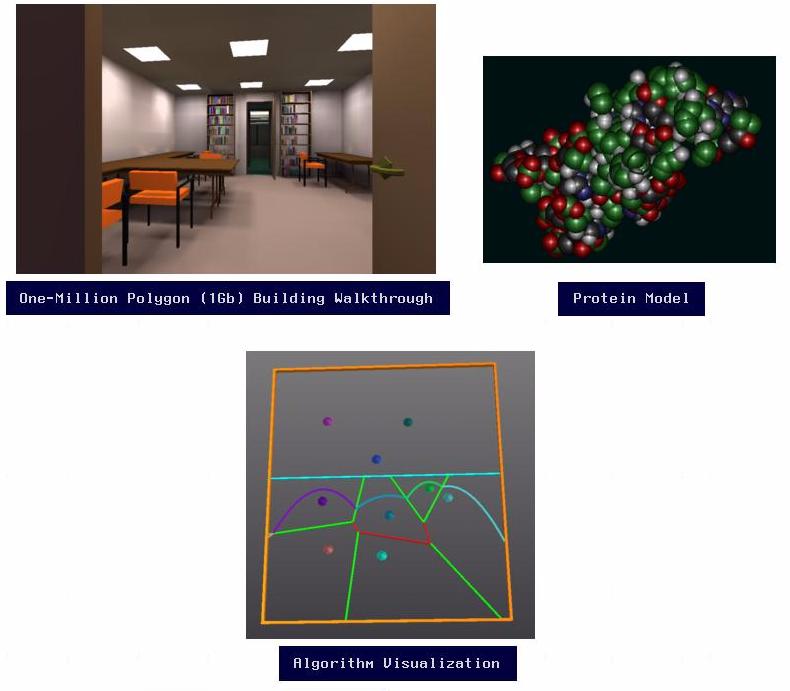
| Instructor:
Seth Teller NE43-208, (617) 258-7885 seth@lcs.mit.edu Office hours: by appointment. Prof. Leonard McMillan
Course secretary:
|
TA/LA:
Neel Master neel@graphics.lcs.mit.edu Textbook:
|
Time and Place:
MW 230-4pm Room 3-133 Units:
Prerequisites:
|
This is a reading and projects course covering a range of topics related to geometric representation and computation. We will study fundamental data structures and algorithms from computational geometry and computer graphics, their application to problems that occur in practice, and techniques for visual inspection of and interaction with geometric entities.
The aim of the course is to gain familiarity with the understanding,
crafting, use, augmentation and visual inspection of geometric objects
and data structures. Specifically the course will have
these major
focuses:
Registration is by approval of the instructor; it will probably be limited to about 25 students.
Format
A typical class meeting will consist of an instructor or student presentation of papers and software, and a discussion of the material co-led by the student and instructor. Each lecture, one student will be expected (given several weeks' notice) to summarize the material for that lecture and help lead a discussion of the readings. One week before the student is to present, s/he will be expected to submit a "pre-talk" (a draft version of the overheads to be used) and an initial treatment of the "talking points" suggested by the teaching staff, as well as (of course) other discussion topics the student wishes to cover in class.
There will be substantial use of existing packages for geometric computation and visualization.
The teaching staff will provide timely feedback about the pre-talk. The discussion questions will be evaluated, and then forwarded (possibly with modifications) to everyone in the class. These questions will also be posted to the course web page in a timely fashion.
All class members will be expected to have read the listed readings, and pondered the discussion questions by the start of the relevant class.
Assignments
There will be several small programming assignments. These are
intended to get everyone familiar with the issues of crafting technically
substantive and visually interesting manipulations of geometric entities.
Course project
Each student will, with a partner, propose and complete a substantial
programming project related to interactive geometric computation. Many
topics will be suggested, but students are of course free to propose their
own project topic. Acceptable projects include but are not limited
to an implementation (and improvement) of an algorithm from a paper, a
synthesis of techniques from several papers, or a work that explains or
advances the state of the art. The projects are expected to have some research
content and should be designed with that in mind.
Grades
Course grades will be based on the pre-talk and discussion questions,
presentations, class participation, and the final project.
Last modified: Feb 1998
Seth Teller, MIT Computer Graphics Group, seth@mit.edu